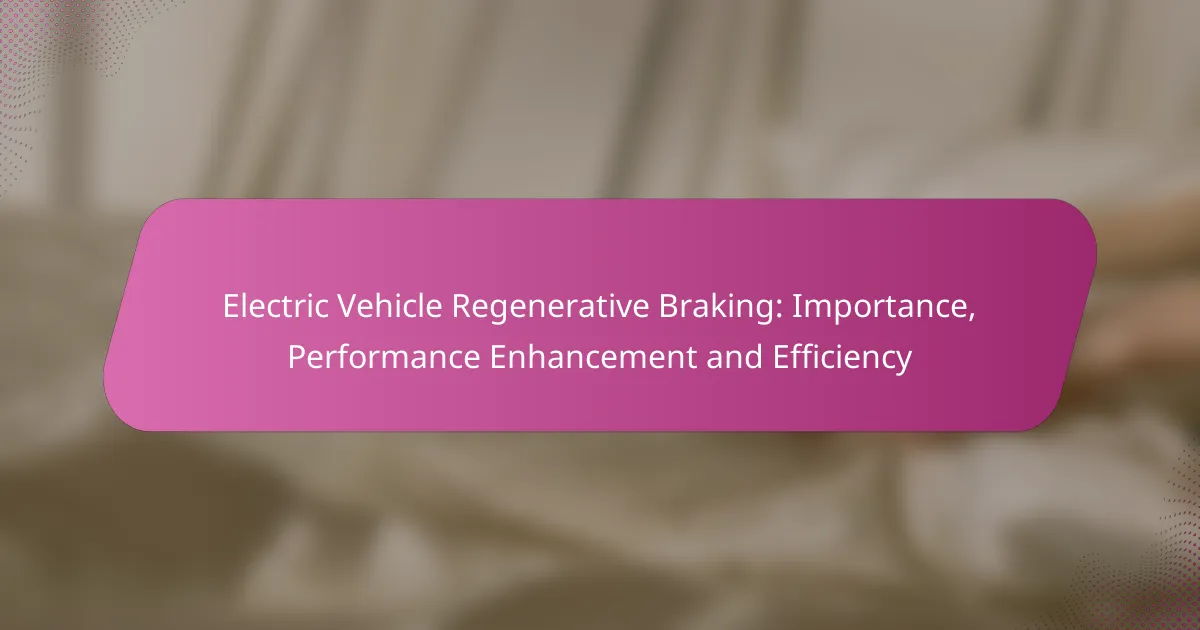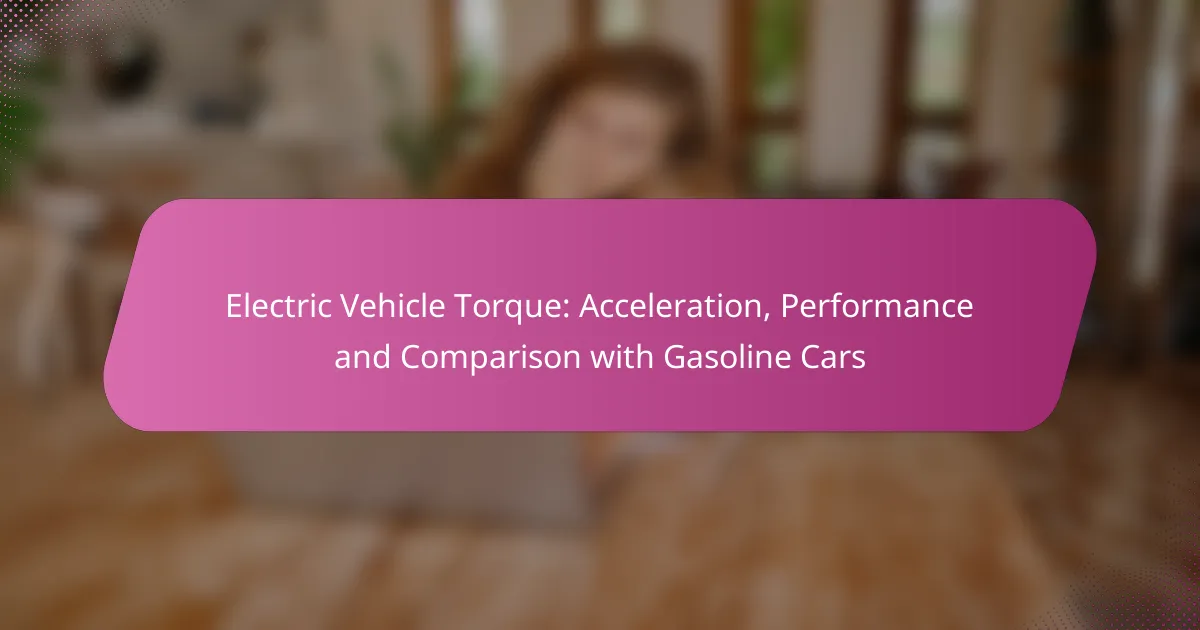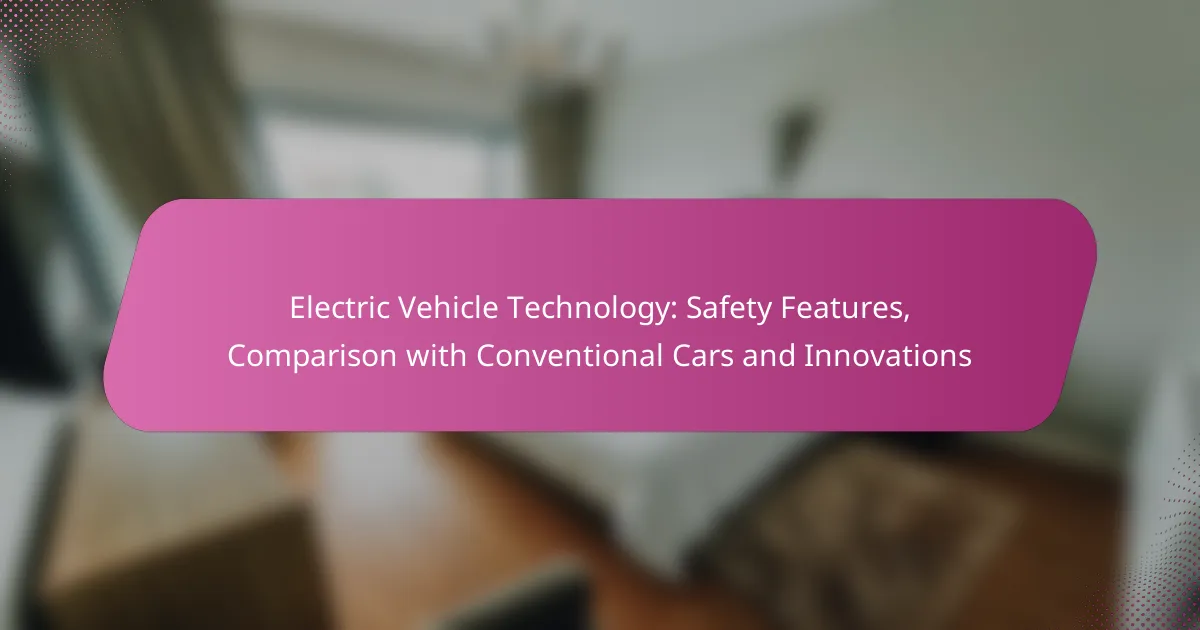Regenerative braking is a crucial technology in electric vehicles (EVs) that captures kinetic energy during braking and converts it back into stored electrical energy. This process not only enhances energy efficiency and extends driving range but also reduces brake wear and operational costs. By improving overall vehicle performance and sustainability, regenerative braking plays a vital role in the advancement of electric mobility.
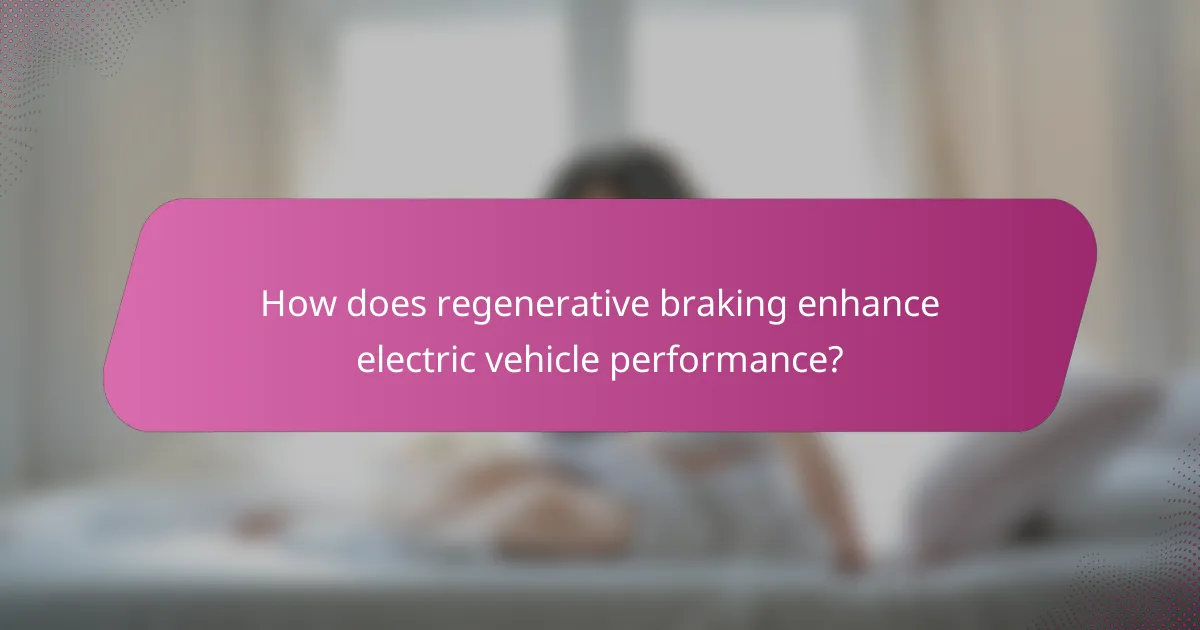
How does regenerative braking enhance electric vehicle performance?
Regenerative braking significantly enhances electric vehicle performance by converting kinetic energy back into stored energy during braking. This process not only improves energy efficiency but also contributes to a longer driving range and better vehicle control.
Increased energy efficiency
Regenerative braking increases energy efficiency by capturing energy that would otherwise be lost as heat during braking. When the driver applies the brakes, the electric motor reverses its role and acts as a generator, converting kinetic energy into electrical energy stored in the battery.
This process can recover a substantial portion of the energy used for acceleration, often in the range of 10-30%. Drivers can maximize this efficiency by anticipating stops and easing off the accelerator early, allowing the system to engage more effectively.
Improved range
By recovering energy through regenerative braking, electric vehicles can extend their driving range. This is particularly beneficial in urban environments where frequent stopping and starting occurs, allowing for more energy to be recaptured and reused.
For example, a well-optimized regenerative braking system can add several kilometers of range on a single charge, depending on driving habits and conditions. Drivers should be aware that aggressive braking can reduce the effectiveness of the system, so smooth driving is encouraged.
Better vehicle control
Regenerative braking enhances vehicle control by providing smoother deceleration and reducing wear on traditional brake components. This system allows for more gradual stops, which can improve driver comfort and safety.
Additionally, the ability to modulate braking force through regenerative systems helps maintain traction, especially in slippery conditions. Drivers should practice using regenerative braking effectively by adjusting their driving style to utilize the system’s benefits fully, such as using one-pedal driving techniques where feasible.

What are the key benefits of regenerative braking in electric vehicles?
Regenerative braking in electric vehicles (EVs) offers significant advantages, including energy recovery, reduced brake wear, and lower operational costs. These benefits enhance the overall efficiency and performance of EVs, making them more sustainable and economical over time.
Energy recovery
Regenerative braking captures kinetic energy that would otherwise be lost during braking and converts it into electrical energy. This energy is then stored in the vehicle’s battery, extending its range and improving efficiency. In many cases, regenerative braking can recover a substantial portion of the energy used during acceleration, often around 10-30% depending on driving conditions.
For optimal energy recovery, drivers should anticipate stops and apply the brakes gently. Aggressive braking can reduce the effectiveness of this system, leading to less energy being recaptured.
Reduced brake wear
By utilizing regenerative braking, electric vehicles experience significantly less wear on traditional brake components. Since the electric motor assists in slowing down the vehicle, the mechanical brakes are used less frequently, prolonging their lifespan. This reduction in wear can lead to fewer maintenance needs and lower replacement costs for brake pads and rotors.
Regular maintenance checks are still necessary, but drivers can expect to replace brake components less often than in conventional vehicles. This not only saves money but also contributes to less environmental waste from discarded brake parts.
Lower operational costs
Regenerative braking contributes to lower operational costs for electric vehicle owners by enhancing energy efficiency and reducing maintenance expenses. The ability to recover energy means that drivers can travel further on a single charge, potentially saving on electricity costs. Additionally, with less frequent brake replacements, overall maintenance costs decrease.
To maximize these savings, EV owners should consider driving habits that promote energy recovery, such as smooth acceleration and deceleration. This approach not only improves efficiency but also enhances the driving experience.

How does regenerative braking work in electric vehicles?
Regenerative braking in electric vehicles (EVs) captures kinetic energy during deceleration and converts it back into electrical energy, which is stored in the battery. This process enhances overall efficiency by reducing energy waste and extending the vehicle’s range.
Energy conversion process
The energy conversion process in regenerative braking involves transforming the vehicle’s kinetic energy into electrical energy. When the driver applies the brakes, the electric motor switches roles and acts as a generator. This change allows the motor to slow down the vehicle while generating electricity.
During this process, the kinetic energy that would typically be lost as heat in traditional braking systems is instead harnessed. This can lead to energy recovery rates of around 10-30% depending on driving conditions and vehicle design.
Role of electric motor
The electric motor plays a crucial role in regenerative braking by facilitating the conversion of kinetic energy to electrical energy. When braking occurs, the motor’s rotation is reversed, allowing it to generate power instead of consuming it. This dual functionality is a key advantage of electric motors over conventional internal combustion engines.
In many EVs, the efficiency of this process can vary based on factors such as motor design and vehicle speed. Optimizing the motor’s performance can significantly enhance energy recovery during braking.
Battery charging during braking
During regenerative braking, the electrical energy generated is directed back into the vehicle’s battery, effectively charging it. This process helps to replenish the battery’s charge, which can extend the driving range of the EV between charging sessions.
However, the amount of energy that can be stored during braking is limited by the battery’s state of charge and its capacity. If the battery is near full, the ability to capture energy diminishes, highlighting the importance of battery management systems in maximizing efficiency.
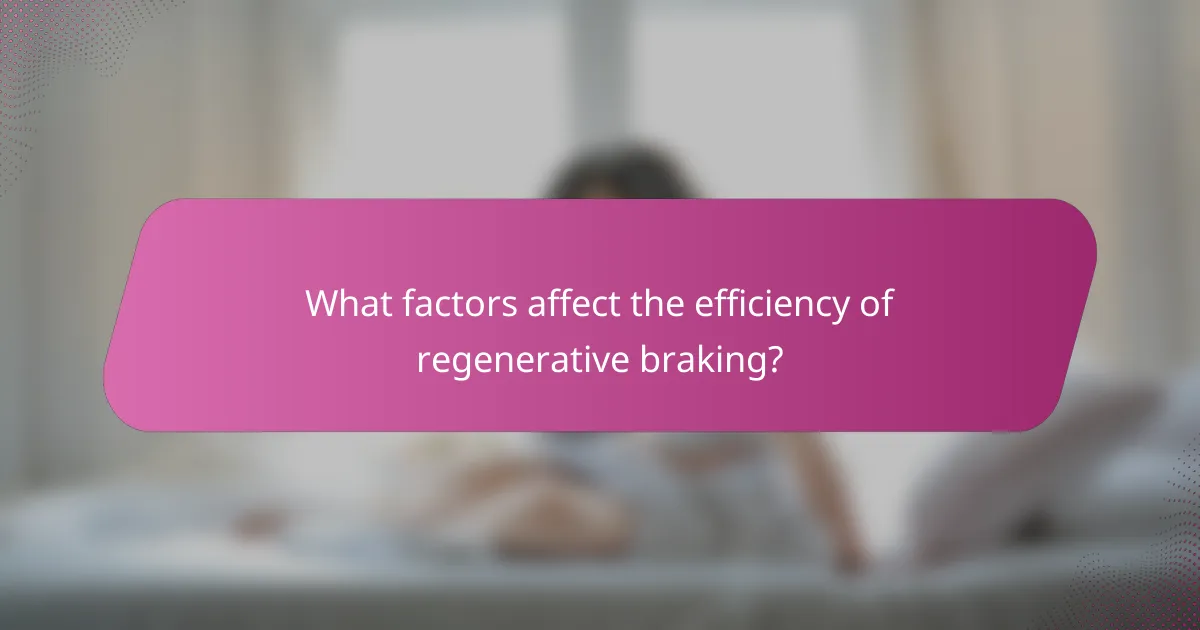
What factors affect the efficiency of regenerative braking?
The efficiency of regenerative braking is influenced by several key factors, including driving conditions, vehicle weight, and the battery state of charge. Understanding these elements can help optimize energy recovery during braking, enhancing overall vehicle performance.
Driving conditions
Driving conditions play a significant role in the efficiency of regenerative braking. Factors such as road surface, weather, and traffic can impact how effectively energy is recovered. For instance, wet or icy roads may reduce traction, leading to less effective braking and energy recovery.
In urban settings with frequent stops, regenerative braking can be more effective due to the higher frequency of braking events. Conversely, on highways, where braking is less frequent, the system may not operate as efficiently.
Vehicle weight
The weight of a vehicle directly affects the performance of regenerative braking. Heavier vehicles require more energy to slow down, which can limit the amount of energy that can be recaptured. A lighter vehicle, on the other hand, can decelerate more easily, allowing for more effective energy recovery.
When designing or choosing an electric vehicle, consider the weight-to-power ratio. Vehicles with a better ratio tend to perform better in terms of regenerative braking efficiency.
Battery state of charge
The state of charge (SoC) of the battery is crucial for the efficiency of regenerative braking. If the battery is nearly full, it may not accept additional energy from regenerative braking, leading to wasted potential. Ideally, the battery should be at a moderate charge level to maximize energy recovery.
Monitoring the SoC can help drivers optimize their braking patterns. For example, if the battery is close to full, it may be beneficial to adjust driving habits to reduce reliance on regenerative braking until the battery has more capacity to accept energy.
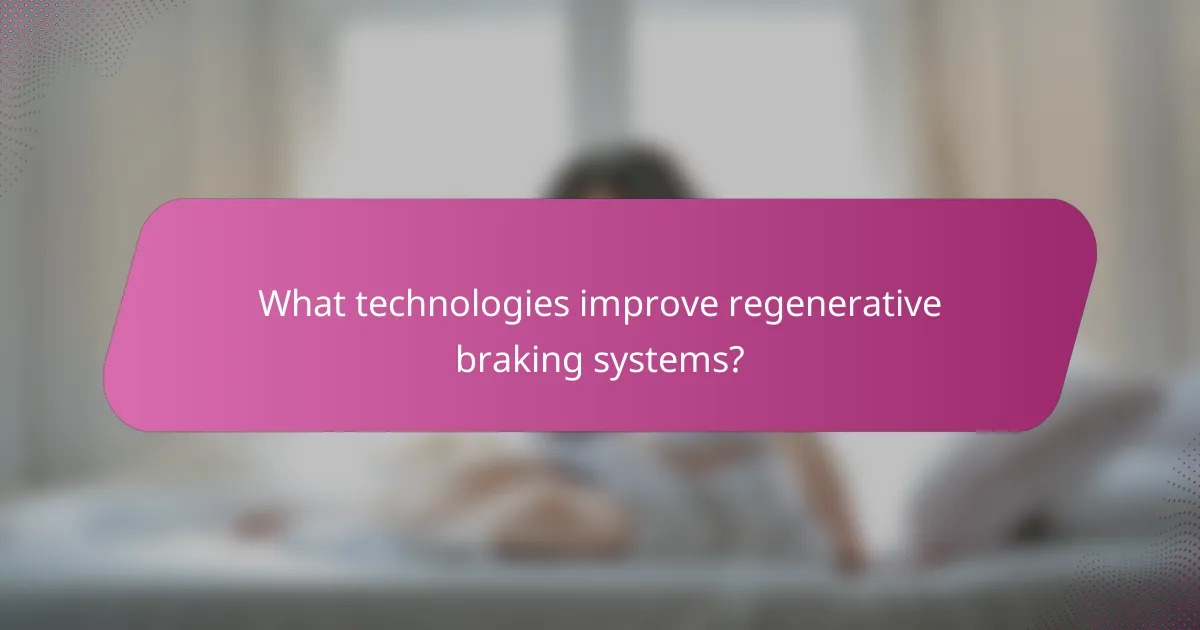
What technologies improve regenerative braking systems?
Regenerative braking systems are enhanced by various technologies that optimize their performance and efficiency. Key advancements include advanced control algorithms, high-efficiency electric motors, and smart energy management systems, each contributing to improved energy recovery during braking.
Advanced control algorithms
Advanced control algorithms play a crucial role in maximizing the effectiveness of regenerative braking. These algorithms adjust the braking force applied to the wheels based on real-time data, ensuring that the system captures as much kinetic energy as possible without compromising vehicle safety or comfort.
For example, predictive algorithms can anticipate braking needs based on driving patterns, allowing the system to engage regenerative braking earlier. This proactive approach can significantly increase energy recovery, enhancing overall vehicle efficiency.
High-efficiency electric motors
High-efficiency electric motors are essential for effective regenerative braking, as they can quickly switch between driving and generating modes. These motors are designed to minimize energy loss during the conversion process, allowing for better energy recovery when slowing down.
In many electric vehicles, permanent magnet synchronous motors are used due to their superior efficiency and responsiveness. This technology can lead to energy recovery rates of 30-50% during braking, depending on driving conditions and vehicle design.
Smart energy management systems
Smart energy management systems integrate various vehicle components to optimize energy use, including during regenerative braking. These systems monitor battery state, energy consumption, and driving conditions to determine the best strategy for energy recovery.
For instance, when the battery is nearly full, the system may limit regenerative braking to prevent overcharging. This intelligent management ensures that energy recovery is maximized while maintaining battery health and overall vehicle performance.
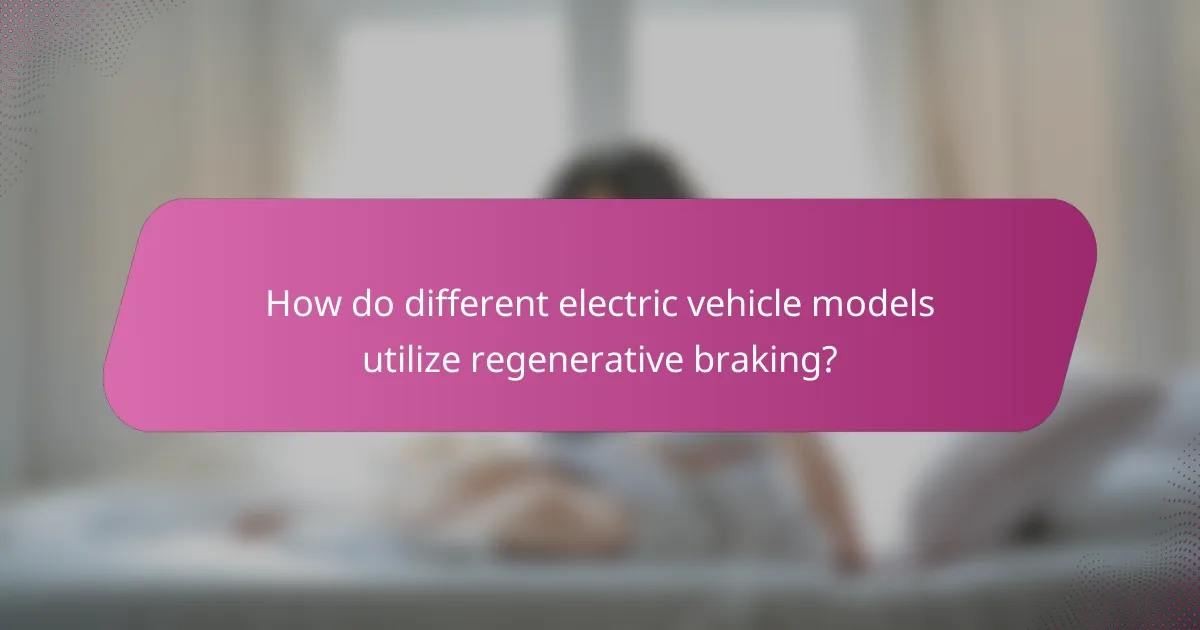
How do different electric vehicle models utilize regenerative braking?
Different electric vehicle models implement regenerative braking in various ways, enhancing energy efficiency and driving range. This technology captures kinetic energy during braking and converts it back into usable electrical energy, which can recharge the battery and improve overall vehicle performance.
Tesla Model 3
The Tesla Model 3 utilizes a highly efficient regenerative braking system that allows drivers to adjust the level of regenerative force through the vehicle’s settings. This feature enables a more personalized driving experience, where drivers can choose between a stronger or milder braking effect, impacting how much energy is recaptured.
When driving in standard mode, the Model 3 can recover a significant portion of energy during deceleration, often translating to an increase in range of several percent under typical driving conditions. The system is designed to engage automatically, providing seamless transitions between regenerative and conventional braking.
Nissan Leaf
The Nissan Leaf features a regenerative braking system that is straightforward and user-friendly. It employs a single-pedal driving mode, allowing drivers to accelerate and decelerate using just the accelerator pedal, with regenerative braking activating as soon as the driver lifts off the pedal.
This system can recover energy effectively, contributing to an increase in driving range, especially in urban settings where frequent stops are common. However, the Leaf’s regenerative braking may not be as adjustable as that of the Model 3, which could limit customization for some drivers.
